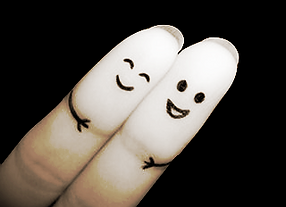
Marriage & Couple Therapy
Relationships hold amazing sway over people. Nothing can boost a person’s sense of goodness and well-being like a happy, healthy relationship. Even when we are in hell, it is all somehow more bearable when we have a partner by our side. At the same time, very little in life can crush us as completely as a relationship in distress. The rest of life can be fantastic but still feel lonely and pointless when our relationships are filled with fighting and distress. Love has the power to cause and cure so much of life's turmoil.


In 2000, almost by accident, I got interested in working with couples and found that I really like this kind of therapy. Working with people as they reveal and struggle with the most core parts of themselves together with their partners - I love and admire that courage. For several years I pursued training and certification in Gottman Method Couples Therapy. I really love John and Julie Gottman. They have great ideas about what successful couples do to make their relationships happy and satisfying.
7 Principles for Making Marriage Work remains one of my favorite relationship books because of all the great information packed into it.
I completed the Gottman training courses and many hours of supervision with certified supervisor Michael Clifford, a gifted couples therapist in practice at Lutheran Counseling Service in Everett. Through the Gottmans I was introduced to Dan Wile, a psychologist in Berkely, California, and the originator of Collaborative Couple Therapy. Training with Dan was a terrific, eye-opening experience. My favorite thing about him is his gentle
authenticity and how he helps people say what's needed accurately but in such a way that makes even the most difficult messages palatable for their partners.

In early 2001 I had the great good fortune of attending a seminar given by Dr. Sue Johnson, a Canadian psychologist and couples therapy researcher who developed Emotionally Focused Therapy for Couples (EFT). At that time I found myself at a crossroads between pursuing training in EFT and the Gottman Method. I chose Gottman, and then about ten years later found my way back to EFT.

So far, EFT is the only therapy for couples that has been clinically tested and found to be helpful. It is based on the idea that what we seek and need in our intimate relationships is the secure felt-sense that we are both loved and worthy of love. It is surprising how many of us wrestle with one or both of these questions:
Am I truly lovable? Can I truly count on you?
In their struggles, people in relationships often find themselves in perpetual conflict. Sometimes one partner feels stuck in endless pursuit of the other, at times afraid that maybe the other person doesn't care as much as they do, or terrified that maybe the real problem is that "I am too much and I just drive you away." Sometimes partners find themselves wanting to avoid, perhaps stuck between the extremes of feeling nagged and frightened that "if you really knew me you wouldn't want me or love me anymore." EFT helps couples stuck in an insecure dance where oftentimes one partner pursues and the other withdraws. It helps them slow down and face one another, understand the steps in their conflict dance, and move on to develop a deeply intimate and secure connection that sometimes neither one has ever experienced before. Very exciting stuff!
So in 2011 I joined the International Center for Excellence in Emotionally Focused Couple Therapy and have devoted much of my time and energy to seeking training, consultation, and supervision in the provision of EFT to my couples. EFT is the hardest thing I ever tried to learn, and though it took me ten years, I achieved certification in this form of therapy. Most of my practice these days is devoted to working with couples. I find it fascinating and fulfilling, and am constantly learning.




